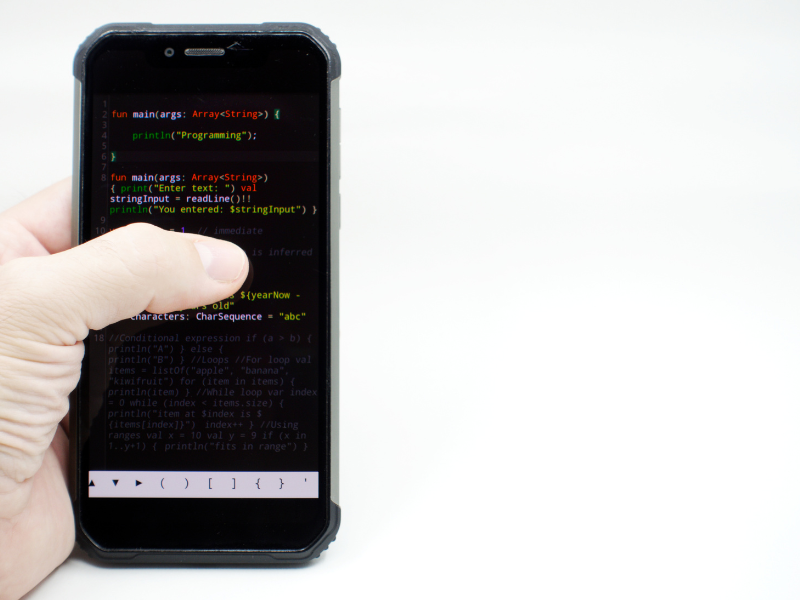In today’s digital age, mobile apps have become an integral part of our lives. From checking the weather to managing finances, there’s an app for almost everything. Behind these innovative and user-friendly mobile applications lies the art and science of mobile app coding.
In this comprehensive guide, we will delve into the world of mobile app coding, exploring the key steps, best practices, and insights from experienced app developers. Whether you’re a beginner or an experienced programmer, this guide will equip you with the knowledge and skills needed to develop successful mobile apps.
Mobile App Coding: An Overview

Mobile app coding involves writing the software that runs on mobile devices such as smartphones and tablets. It is a process of creating an app from scratch or modifying existing apps to enhance their functionality. Mobile app coding can be done using various programming languages such as Java, Swift, Kotlin, and C#. Each programming language has its own set of features and advantages, making it crucial to choose the right language based on your app’s requirements.
The Key Steps in Mobile App Coding

Developing a high-quality mobile app requires meticulous planning and execution. Let’s dive into the key steps involved in mobile app coding:
1. Idea Generation
A successful mobile app starts with a great idea. Spend time brainstorming and identifying a problem that can be solved through an app. Conduct market research to validate your idea and identify potential competitors. This initial step sets the foundation for the entire app development process.
2. Wireframing and Prototyping
Before diving into code, it’s important to create a wireframe or prototype of your app. This step helps visualize the app’s structure, layout, and user interface (UI). Tools like Adobe XD, Sketch, or Figma can assist you in creating interactive wireframes and prototypes.
3. Choosing the Right Development Approach
There are two popular approaches to mobile app development: native and hybrid. Native app development involves building separate apps for iOS and Android using their respective programming languages (Swift for iOS and Java/Kotlin for Android). Hybrid app development, on the other hand, allows you to use a single codebase for both platforms, utilizing frameworks like React Native or Flutter.
4. Selecting the Programming Language
Choosing the right programming language is crucial for successful mobile app coding. Here are a few popular options:
- Java: Java is widely used for Android app development. It offers excellent performance and a vast ecosystem of libraries and frameworks.
- Swift: Swift is the primary programming language for iOS app development. It provides cutting-edge features and enhances productivity.
- Kotlin: Kotlin is a modern programming language preferred by Android developers for its concise syntax and improved safety features.
Quote from the internet: According to a survey conducted by Stack Overflow, Kotlin is the fourth most loved programming language by developers.
5. Backend Development
Most mobile apps require a backend infrastructure to handle tasks such as user authentication, data storage, and push notifications. Choosing the right technology stack for backend development is crucial. Popular options include Node.js, Django, Ruby on Rails, and PHP.
6. Building the User Interface
The user interface (UI) of your mobile app plays a significant role in its success. Use UI design principles and follow platform-specific guidelines (Material Design for Android, Human Interface Guidelines for iOS) to create an intuitive and visually appealing interface.
7. Implementing Functionality
This step involves writing the actual code that drives your app’s functionality. Break down the app into smaller modules and implement them one by one. Leverage the power of libraries and frameworks to expedite development while maintaining code quality.
8. Testing and Quality Assurance
Thorough testing is crucial to ensure your app functions flawlessly across various devices and platforms. Conduct unit tests, integration tests, and user testing to identify and fix any bugs or performance issues. Utilize tools like Xcode’s XCTest or Android Studio’s Espresso for automated testing.
9. Deployment and App Store Optimization
Once your app is developed and thoroughly tested, it’s time to deploy it to the app stores. Follow the submission guidelines of Google Play Store and Apple App Store. Pay attention to app store optimization (ASO) techniques, including keyword optimization, engaging app descriptions, and attractive screenshots.
10. Analyzing User Feedback and Iterating
Building a successful mobile app doesn’t end with deployment. Continuously listen to user feedback, analyze app usage data, and make iterative improvements. Regularly release updates to address user concerns and introduce new features to keep your app relevant and engaging.
FAQs (Frequently Asked Questions)

Q: What are the essential programming languages for mobile app coding?
The key programming languages for mobile app coding depend on the platform you’re targeting. For Android development, Java and Kotlin are popular choices, while Swift is widely used for iOS development. Cross-platform frameworks such as React Native and Flutter have also gained popularity as they allow developers to write code once and deploy it on both iOS and Android.
Q: How long does it take to develop a mobile app?
The development time for a mobile app varies based on its complexity, features, and the development team’s expertise. Simple apps with basic functionality can be developed in a few weeks, while more complex apps may take several months. It is important to allocate sufficient time for planning, design, coding, testing, and deployment.
Q: What is the cost of mobile app development?
The cost of mobile app development depends on a variety of factors, including the app’s complexity, features, and the hourly rates of the development team. On average, mobile app development can cost anywhere from a few thousand dollars to several hundred thousand dollars. It is recommended to discuss your app requirements with multiple development agencies or freelancers to get accurate cost estimates.
Q: How can I monetize my mobile app?
There are various monetization strategies for mobile apps. Popular options include in-app purchases, advertising, subscriptions, and selling data. Choose a monetization strategy that aligns with your app’s purpose and target audience. Consider conducting market research and consulting with experts to identify the most suitable monetization model.
Conclusion

Mobile app coding is a complex yet rewarding process that requires a combination of technical expertise, creativity, and attention to detail. By following the key steps outlined in this comprehensive guide, you can embark on your app development journey with confidence.
Remember to stay updated with the latest industry trends, leverage the power of libraries and frameworks, and most importantly, listen to your users’ feedback. With determination and continuous improvement, you can create successful and impactful mobile apps that cater to the needs of millions. Start your coding journey today and unlock limitless possibilities in the world of mobile app development!
